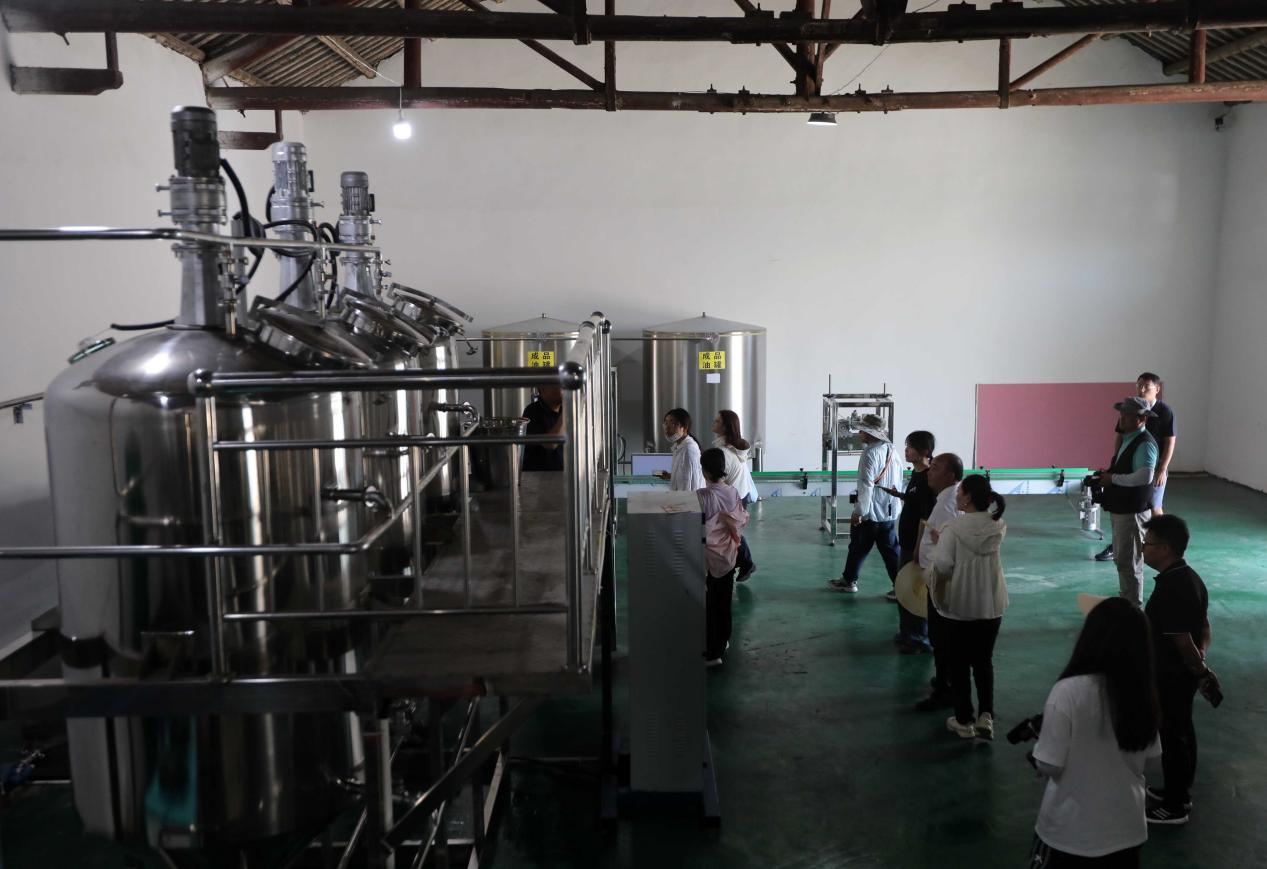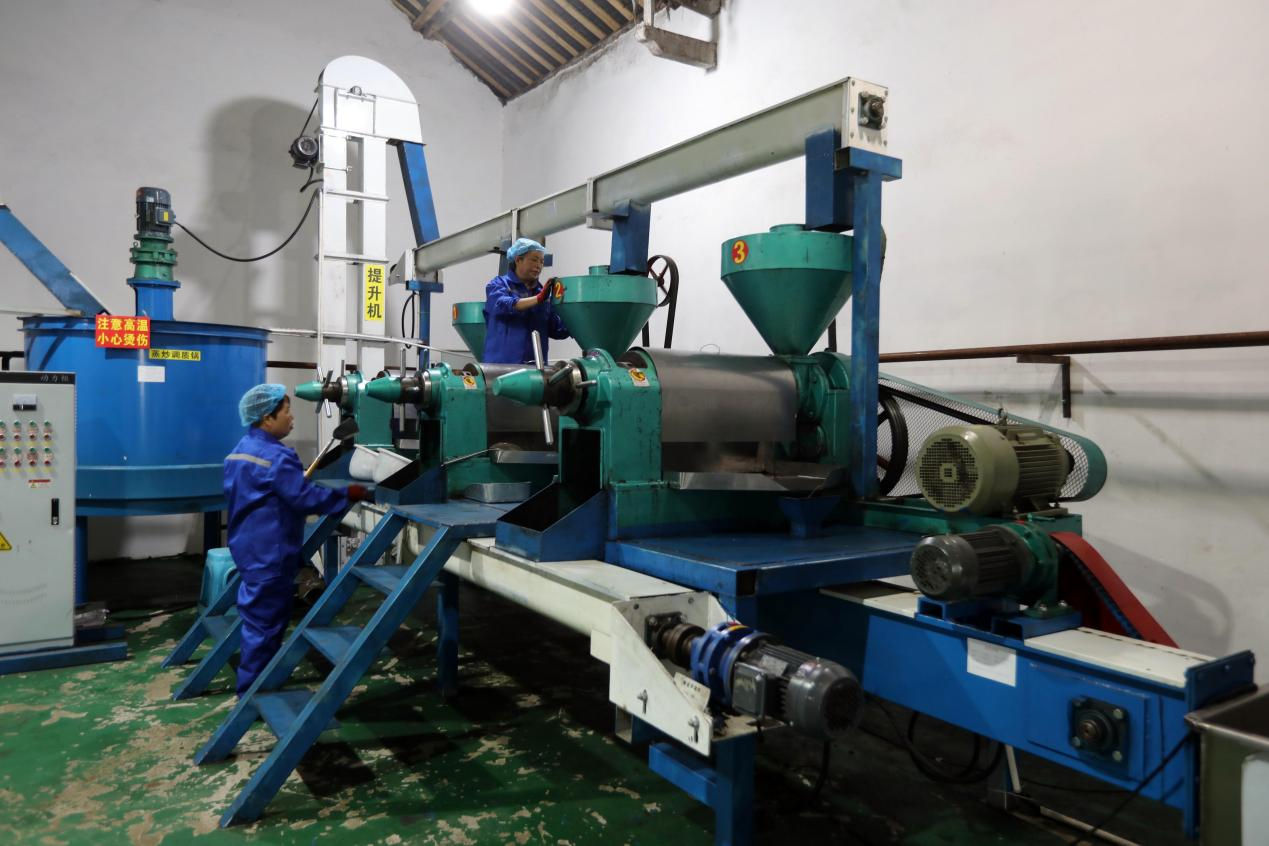
 Print
Print
Fragrant Oil-tea Camellia in Sichuan’s Miao Townships: Ethnic Funds Fuel Rural Revitalization
2025/06/16 14:58 Origin:cced.cn
"Planting oil-tea camellia in inferior forest land turns waste into treasure. With strong stress resistance and promising market prospects, it’s an ideal industry for boosting incomes," said Hu Ya, Party Secretary of Qilin Miao Township in Xingwen County, Yibin City, Sichuan Province, during the midsummer season at the township’s thousand-mu oil-tea camellia demonstration base. Relying on unique resources and geographical advantages, the camellia industry is becoming a pillar of local rural revitalization.

Also known as tea-oil tree (Camellia oleifera), oil-tea camellia gets its name from the edible oil extracted from its fruits. The clear, fragrant, and nutrient-rich camellia oil is a premium edible oil. In recent years, facing the reality of a three-dimensional mountain climate, abundant forest resources, and more mountainous land than arable fields, Xingwen County has actively explored developing characteristic mountain forestry.
"Although oil-tea camellia has a long investment cycle, Qilin Miao Township has solved pre-high-yield management issues through models like compensating long-term with short-term and combining tall and short crops," Hu Ya explained. With wide row spacing, tea, Chinese herbal medicines, or grain can be interplanted during the 6–8 years before peak yield, optimizing land use. "We’ve rejuvenated old forests through low-yield transformations like top grafting and introducing new varieties."
Liang Zhonghua, Director of Xingwen Qilin Miao Township Oil-tea Camellia Cooperative, played a key role in variety innovation. He noted that traditional local varieties had low yields, so after graduating from Sichuan Agricultural University, he collaborated with universities and research institutions to breed two improved varieties—Cenruan No. 3 and Tengchong No. 1—which yield 10+ times more than old varieties and 5% more than similar breeds.
Walking through Qilin Miao Township, oil-tea camellia forests stretch from mountain peaks to slopes, breathing new life into once-barren slopes and inferior forest land. The township has planted 10,000 mu of camellia, leveraging its geographical edge.

Hu Ya introduced that camellia oil, known as "health oil", "longevity oil", and "beauty oil", sells for 120 yuan per jin, favored by middle-to-high-end consumers. "With a current per-mu yield of 50 jin, that’s 5,000 yuan in output value. The high-yield period lasts 80–100 years, ensuring stable incomes." The Sanhe Camellia Oil brand has entered the market.
In Sanhe Village, a 3,800-square-meter oil-tea camellia processing plant is operational, featuring new seed-stripping, drying, pressing, and refining lines with a daily capacity of 5 tons. "The plant exemplifies revitalizing idle assets, shifting from traditional manual pressing to modern mechanized production, significantly improving oil extraction rates and incomes," Hu Ya said. Operated under "centralized management, unified construction, and independent property rights", it strengthens the industry chain.
Key support comes from ethnic minority special funds. Qilin Miao Township has received 13.9 million yuan in provincial and municipal ethnic funds in recent years for camellia development, including over 1 million yuan for the processing plant. "Profit isn’t the main goal—we prioritize benefiting villagers and scaling up," said Hu Ya. The cooperative was named a National Model Farmer Cooperative in 2023.
"Our five-year goal is to build a 10,000-mu forest, 100-million-yuan income demonstration park," Hu Ya stated. This green industry, energized by funds, empowered by technology, and linked by industry chains, is becoming the most fragrant "hope" for Miao townships in southern Sichuan.
In recent years, Sichuan has adhered to forging a strong sense of community for the Chinese nation, pioneering the National Unity and Progress Demonstration Project nationwide. Following the principle of "targeted investment, complementary functions, information sharing, and performance improvement", it coordinates about 800 million yuan in annual ethnic funds, integrating unity work with rural revitalization, grassroots governance, and ecological protection. Focusing on collective economy and industry, it has built over 300 demonstration projects—including unity villages and ethnic villages—to boost high-quality development in ethnic areas. (Text/Wang Weidong, Photos/Wang Lei)
Copyright © CCEDN.COM.CN. All Rights [京ICP备2024049485号-1] Tel: 0086-10-88820521

